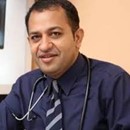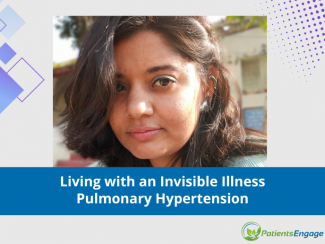
Rehan Issa, son of Badar, recounts how the family took a bold decision to let his mother to be the first patient for a cutting-edge technique to cure her diseased heart valve. Read the build-up to the critical operation.
It was November, 2017. My 83-year-old mother, Badar Issa, was going for a critical operation. Her heart valve was severely damaged and had to be replaced. Chances of survival were 50 per cent.
The doctor had summoned all family members to be present for the operation. It could either be the beginning or end of life for my mother. We were all extremely tense. As she was wheeled into the operation theatre, we crowded around her, hugged her and wished her best. But deep down in our heart, we suspected that it was last time she was holding our hands.
As I sat outside the operation theatre, I remembered my mother as always a small-built lady, but full of fire and zest. She loved her non-vegetarian food and socialised enthusiastically with her friends and family in the colony, often returning home post-midnight. She liked watching TV and had her preferred serials. She was also an avid reader in her heydays. Her favourite authors were Urdu writer A R Khatoon and bestselling novelist and poet Ibn-e-Safi. Sometimes, she would be so immersed in her books that we three children had to run elsewhere for attention.
Over the years, she had become frail and weighed barely 51 kgs. Fortunately, there were no major health issues that troubled her; no diabetes or high blood pressure. She had her thyroid removed in her mid-seventies.
Her Heart Condition Worsens
But as she turned 80, what became a matter of concern was her heart. She had developed coronary artery disease that had slowed her down considerably. With the disease advancing, her breathing became laboured and difficult. She would barely walk a few steps and she would be breathless. Even routine tasks like bathing or getting up from the bed had become problematic and would often trigger chest pain. As a result, she had cut down most of the activities and would sit in one place most of time.
When we took her to the doctor she was diagnosed with severe degenerative valve disease called aortic stenosis. Aortic stenosis is one of the most common and most serious valve disease problems. It is an obstruction in the aortic valve, blocking the flow of blood from the heart.
Under normal circumstances, she would be required to undergo an open heart surgery, a major operation that requires the surgeon to open the chest to access the heart. The doctors felt that my mother, being old and frail, would not be able to survive an open heart surgery as it would put too much stress on her body. The doctor proposed two options for us:
- to let her continue as she was with the support of a few medicines
- to subject her to a new technique of valve replacement that the hospital has just introduced.
We were in an acute quandary, but hesitatingly opted for the second. My mother was going to be the first patient to undergo this new technique. The operation to be performed was the Transcatheter Aortic Valve Implantation (TAVI), one of the most cutting edge procedures being conducted that allows a cardiologist to replace a malfunctioning valve in a patient’s heart in a minimally invasive procedure without cutting open the chest.
When is TAVI safe for a patient?
There were 5 of us from the family who waiting nervously outside the OT. None of us dared to move, in case there was sudden news. Every time we saw a junior doctor or a nurse stepping out, we would immediately approach them to ask about my mother. But the sisters and the nurses did not know what was happening inside. The junior doctors had an inkling that some experiment was on. But all that we could do was wait and watch. It had been a long time since my mother was taken in and were beginning to get edgy and nervous.
Finally, after nearly 7 gruelling hours, the doctor came out of the OT. He had a smile on his face. He informed that the operation had been successful and my mother was fine. What a relief! Allah is great, we chorused, and hugged each other. We distributed sweets and celebrated in the hospital.
The TAVI operation cost the family Rs 25 lakhs but it gave my mother a new lease of life.
Dr.Haresh Mehta, Consultant Interventional Cardiologist at Hinduja Hospital, Khar.
1. Has TAVI emerged as an alternative treatment to open-heart surgery for valve replacement and is it useful for patients like Badar?
Yes TAVI/ TAVR procedure has emerged as an alternative treatment to open heart surgery for majority of patients due to its excellent outcomes same or better as surgery and fast recovery of patients.
2. What are the advantages and disadvantages of TAVI?
- Advantages of TAVR procedure
TAVR is a non-invasive procedure. People may return to daily activities sooner than with open heart surgery. (Usually the hospital stay is about 3-4 days but it depends on patient’s condition and other co-morbidities).
People who undergo TAVR report improved quality of life following the procedure. Other TAVR benefits include: short hospital stay, relief of symptoms (sometimes immediately), improved heart function, and reduced pain and anxiety.
- Disadvantages of TAVR procedure
TAVR procedures are being done in few hospitals due to very few experts and skilled operator.
3. Is the aortic stenosis disease common in the Indian geriatric population?
The prevalence of moderate or severe aortic stenosis in patients more than 75 years old is 3.0%. It is the most common valvular heart disease of the elderly and increases with age. The prevalence is 4.5% at age 75 years and 9.1% at 85 years.







